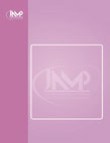Evaluation of information literacy status among medical students at Shiraz University of Medical Sciences
Author(s):
Abstract:
Introduction
The information literacy status and the use of information technology among students in the globalization age of course plans are very momentous. This study aimed to evaluate the information literacy status and use of information technology among medical students of Shiraz University of Medical Sciences in 2013.Methods
This was a descriptive-analytical study with crosssectional method. The study population consisted of all medical students (physiopathology, externship and internship) studying at Shiraz University of Medical Sciences. The sample size (n=310) was selected by systematic random sampling. The tool of data gathering was LASSI questionnaire (assigned by America research association) with 48 closed items in five-point LIKERT scale. The questionnaire included two distinct parts of demographic questions and the information literacy skills based on the standards of information literacy capacities for academic education. The content validity was acquired by professors and experts comments. The reliability was also calculated by Cronbachs alpha (0.85). Data were analyzed in both descriptive (frequency- mean) and analytical level (t-test, analysis of variance) using SPSS 14 software.Results
60.3% of the participants were females, and the remaining (29.7%) were males. The mean score of information literacy and its five subgroups among the students werent at a desirable level. The mean scores of information literacy for educational grades from the highest to lowest belonged to the internship, physiopathology and externship. The results showed that the highest average was related to the effective access ability to information among interns (9.27±3.57) and the lowest one was related to the ability of understanding legal and economical cases related with using information among externs (3.11±1.32). The results of ANOVA showed that there wasnt a significant difference between educational grades and information literacy. Finally, the result of independent t-test did not show a significant difference between the two genders in information literacy.Conclusion
Regarding the importance of information literacy for medical students and undesirable status of information literacy among students, the current educational plans will need to be revised.Keywords:
Language:
English
Published:
Journal of Advances in Medical Education & Professionalism, Volume:5 Issue: 1, Jan 2017
Pages:
42 to 48
magiran.com/p1638073
دانلود و مطالعه متن این مقاله با یکی از روشهای زیر امکان پذیر است:
اشتراک شخصی
با عضویت و پرداخت آنلاین حق اشتراک یکساله به مبلغ 1,390,000ريال میتوانید 70 عنوان مطلب دانلود کنید!
اشتراک سازمانی
به کتابخانه دانشگاه یا محل کار خود پیشنهاد کنید تا اشتراک سازمانی این پایگاه را برای دسترسی نامحدود همه کاربران به متن مطالب تهیه نمایند!
توجه!
- حق عضویت دریافتی صرف حمایت از نشریات عضو و نگهداری، تکمیل و توسعه مگیران میشود.
- پرداخت حق اشتراک و دانلود مقالات اجازه بازنشر آن در سایر رسانههای چاپی و دیجیتال را به کاربر نمیدهد.
In order to view content subscription is required
Personal subscription
Subscribe magiran.com for 70 € euros via PayPal and download 70 articles during a year.
Organization subscription
Please contact us to subscribe your university or library for unlimited access!


